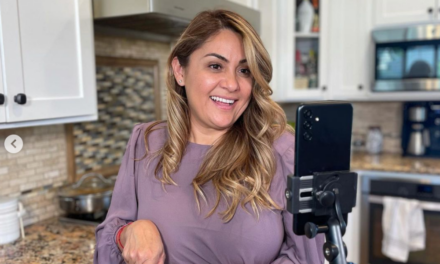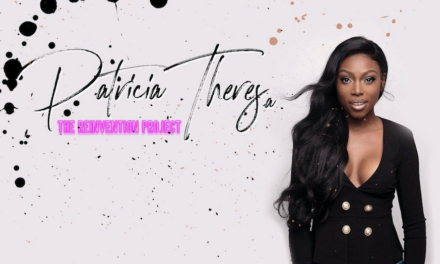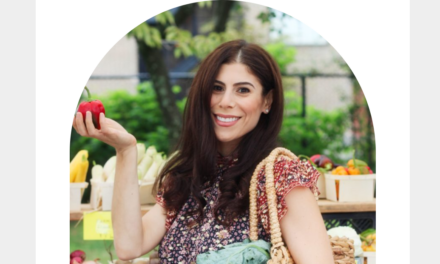
NOVEMBER 8, 2024
5 things to do
You know the challenge that most content entrepreneurs face?
Standing out in a crowded content marketplace.
And I’m not just talking about search result listings either (frankly, that’s becoming a whole new ball of wax given the integration of generative AI). No, I’m talking about all the podcasts, newsletters, books, membership programs, and video channels created around your topic.
Yes, you should have a content tilt that differentiates you from all those other creators. But you also should have a fan-first strategy – to attract an audience that wants to stay and is happy to talk about your brand as a favorite, too.
To get started, do these five things outlined by Jay Acunzo, podcast coach and founder of Creator Kitchen, when he spoke at Content Entrepreneur Expo. His advice works for any content products under development. (BTW, we’ve set the dates for CEX 2025 – Aug. 24 to 26.)
1. Don’t be generic: “Most podcasts are no one’s favorite because most podcasts are generic. That makes them excruciating or forgettable,” Jay says.
Creators make podcasts to give general advice or share interviews on broad topics and themes. They often deliver content that is not served well in an audio format.
This content promises a transactional value – tactical tips, trends and analyses, general success interviews, etc. That’s usually better served by friends, a checklist, or an article, not a podcast.
“The point (from the audience’s perspective) is to acquire something and move on,” Jay says. But podcast creators shouldn’t want their audience to move on.
2. Make a transformative promise: Build the podcast around your vision – bring your personal vision to the show.
The 3 Books with Neil Pasricha podcast does this well as its description explains: “A completely insane and totally epic 20-year-long quest to uncover and discuss the 1,000 most formative books in the world. Each chapter discusses the three most formative books of one of the world’s most inspiring people.”
Neil makes a specific, transformative promise to his audience that keeps them returning for each episode.
3. Act differently: Don’t be satisfied with helping your audience or acting like an expert. Be a visionary. Act like an explorer. Lead your listeners somewhere.
Jay advocates swinging for the mountain peak – and bringing your audience on the journey. They immerse themselves in the podcast. I liken it to appointment viewing. Your content isn’t just a nice-to-listen-to product. It’s on their calendar. They have to know what happens next or experience the next opportunity.
4. Create a premise pitch: Jay offers this fill-in-the-blank sentence to help create your premise promise:
Your premise is the [specific], [defensible (can you own the idea in the marketplace)] purpose for your show, pulled from your [personal vision (are you present)] for your [audience (what are their demographics and psychographics)].
Your premise isn’t just what you explore (topics). It’s what you explore and how you explore it that gives others a reason to care.
5. Grow super fans: The audience growth pattern requires the creator to move listeners from strangers to super fans. And that requires you to grab attention, hold attention, and then convert attention.
“You’ll have lots of spiky points of view on lots of topics, which can get you attention, but to own an idea outright in the market, your point of view should be informed by your premise,” Jay says.
Your premise creates a shared culture – a critical theme to immerse your listeners into your podcast experience. Your audience will want what you want. They will believe what you believe. They will feel an excitement to join or continue the journey. They will subscribe. They will share a language that they use to evangelize your show.
And that journey is what every content entrepreneur wants their audience to take.
Remember, Jay says, “You’re not an expert. You’re an explorer. Don’t explore topics; explore a premise – a specific, defensible purpose pulled from your vision.”
– Ann Gynn
Want to be a favorite on your fans’ bookshelves? Publish a book, and we at Tilt Publishing can help.
tilt publishing book club
- Author complains about marketing support … OK, this is a first for me. A children’s book author writes to an advice columnist because a pet shelter didn’t help market her book enough. [Oregon Live]
- New brick-and-mortar: Barnes & Noble plans to open 60 storefronts this year because it’s seeing strong sales in its existing stores. [Publishers Weekly]
- Printing isn’t just a PDF conversion … Before you lay out your book, you must tackle the manuscript preparation phase. [Lulu]
- ICYMI: Tilt founder Joe Pulizzi walks through the three paths to book publishing. [The Tilt]
5 things to know
Money
-
Reverse ask: Until now, YouTube creators could accept or decline ad requests from brands. Now, Shorts creators with at least 4K subscribers can make the ask of advertisers via YouTube Studio. [Social Media Today]
Tilt Take: Don’t sit back waiting for advertisers and sponsors to come to you. Be proactive and make the ask (no matter what content products you create). -
Hard purchase: Podcast ads are “too difficult to buy,” says an executive from podcast platform Soundstack. They said it’s time for clearer data and alignment with the language used to sell radio ads. [Podnews]
Tilt Take: Think about how to convert “new” terms and phrases into “old school” language or comparisons to attract advertisers who’ve been in the business for a while.
Audiences
-
Download me: Substack is “gifting” subscriptions for users who install its mobile app. [Tech Crunch]
Tilt Take: Gifts are always an attractive offer to get people to do what you want them to do. Just make sure the gift is valuable enough for them and not too costly for your business.
Tech and Tools
-
Be real: The US Federal Tradition Commission charged an AI-enabled consumer review platform with deceiving consumers by misrepresenting ratings and reviews and artificially inflating average ratings and review counts. [Federal Trade Commission]
Tilt Take: Don’t exaggerate or attempt to deceive your audience. Your goal is to build trust and loyalty.
And Finally
-
Influencer or creator: Some believe the term ‘influencer’ is becoming outdated as many creators build businesses beyond making social media content. Others think the definition comes down to how the creator or influencer and brand interact with their audience. The terms often get conflated and confused — and sometimes, it just depends on who you ask. [Digiday]
Tilt Take: We do see attention growing for creators building businesses in this new era where brands can create their own AI influencers. The article is a helpful conversation to educate people on the differences.
5 things from the tilt
- Tilt Your Business podcast at its new time – 4:30 p.m. US ET Tuesdays. Join Ann and Michelle to talk about how to grow your content business.
- Most content creators are selling their newsletter, podcast and website inventory the wrong way. (Content Inc.)
- Joe and Robert talk about election marketing and why Trump won. (This Old Marketing)
- Matt and Lauren share tips for maximizing your return on investment when you attend a conference. (Publish & Prosper)
- ICYMI: Get More and Do Less on Social
Get more of the Full Tilt stories on TheTilt.com.
Know a content creator who’s going full tilt? DM us or email [email protected].
Want to advertise on The Tilt? Go here.
Or email us at [email protected].
Was this email forwarded to you? Get your own sub here.
Copyright ©2024 Lulu Press, Inc. All rights reserved.
Update your preferences | Unsubscribe | PO Box 12018, Durham, NC 27709





